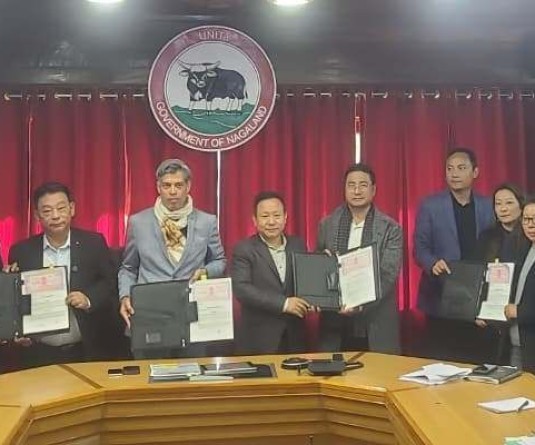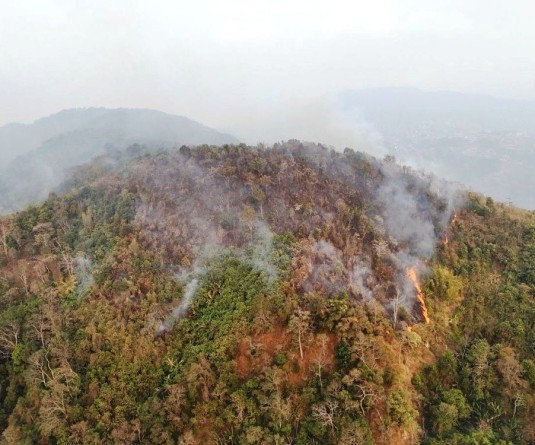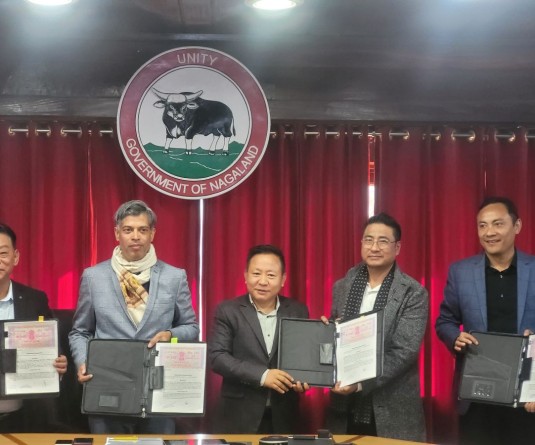In this file photo an Indian soldier patrols the streets of Kohima. The Armed Forces Special Powers Act which was introduced in 1958 by the Indian Parliament provides ‘special powers’ to the Armed Forces. Though there is an ongoing ceasefire, Nagaland State continues to be categorized as a “Disturbed Area,” bringing the AFSPA into operation. (Caisii File Photo)

Dimapur, March 24 (MExN): The Armed Forces Special Powers Act or AFSPA has been in the limelight. Recently, the Army chief General Bikram Singh commented the time is not right for the removal of AFSPA in Jammu & Kashmir at the ‘India Today’ conclave in New Delhi.
“Has it (AFSPA) in any way solved the problem whether the Indo–Naga conflict, or conflicts and insurgency problems in other parts of the Northeast or Jammu & Kashmir?” asks Ago Iralu, speaking over the Act’s relevance. The Act applies to all the Northeastern states and Jammu & Kashmir currently.
Naga civil society groups have been campaigning for the repeal of AFSPA since it was first introduced in 1958 to address the Naga political issue, but post ceasefire (1997), the issue seems to have been overshadowed by other “talks”. However the constant attention on Jammu & Kashmir and its experience with AFSPA has swerved the attention of the national media.
“I personally feel that just because an issue catches the “attention” of the national media, it does not make it more or less visible,” says Dolly Kikon. On the other hand, a professor, who does not wish to be named, argues Nagas are being very silent about this Act. “We have to be more vocal about the issue. Under this Act, Nagas have been most affected historically,” the professor asserts.
Often times, this issue gets buried in the discourses of development and progress in Nagaland, but its history, where the Indian armed forces were responsible for atrocities against the Nagas under the impunity of the Act continue to haunt the minds of the Nagas.
The AFSPA which is modeled on the Armed Forces Special Powers Ordinance 1942 promulgated by the British to suppress Mahatma Gandhi’s Quit India movement was enacted by the Indian parliament in 1958 to combat the Naga movement for a sovereign Nagaland. But the Act seems ironic when contextualized with the present scenario of the state. The essence of the Act and the basis on which the “disturbed area” is being re-extended has become a farce because Nagaland now has multiple nationalist groups as opposed to one when the Act was introduced. “The use of standing Territorial Army as a means of aiding “civil power” and control continues to remain farcical in India because of the executive/ legislative/ judicial tripartite struggle for power exhibitionism, but also because of the weak nature of Indian state as a proper nation-state,” says Kekhrie Yhome, member of Naga Peoples Movement for Human Rights.
Emphasizing that the way ahead is to carry on the campaign to repeal the AFSPA by the young Nagas, Dolly adds, “In many ways all there is to say and write and do about the AFSPA has been done, from a Supreme Court committee, to a national report, to hundreds of public hearings across the country. Not surprisingly, all these forums have declared that the AFSPA needs to be revoked.”
The Armed Forces, as we see in the local newspapers, have assimilated into the society in ways that the general public fails to recognize the totalitarian kind of authority vested through the Act most of the time. Their involvement in the public sector by ways of conducting civic awareness programmes, giving out medical aid, and consistently donating one thing or the other to the public raises concerns about their influence and possibility of weakening the civil administration. The implementation of the Act in the state currently is intricate. “When it [AFSPA] was introduced, at the peak of the conflict, it was a physical suppression. But now in the ceasefire time, it has become very sophisticated. It is no longer confined to physical repression. It has become more of a psychological warfare,” comments Lanusashi, a professor in Nagaland University.
Armed personnel of the security forces, for instance, walk into schools and institutions (NGOs) fully armed. This, say experts, creates fear psychosis among children and adults alike. The liberal frisking that the forces put the population through (especially rigid in some check posts) ingrains a permanent sense of underlying disturbance in the collective as well as individual mind.
Appeals by the state government to lift the Disturbed Areas Act have been rejected in the past, though the law says that state government should be consulted while making or revoking the “disturbed area” declaration. “The need for AFSPA and therein re-extending “disturbed areas” expresses in clear terms the fragile tenets defining laws meant for the democratic welfare and value for the people and laws meant for elucidating control and authoritarianism,” adds Kekhrie.
Ironically, people in the state have to live under constant trauma over militarization and a law like AFSPA which empowers armed forces to exercise “special powers” in the world’s largest democracy. “When the younger generation realizes they have been cheated by the government in the name of democracy, there will be another movement which will only complicate the ongoing Indo–Naga problem,” says Lanusashi.






